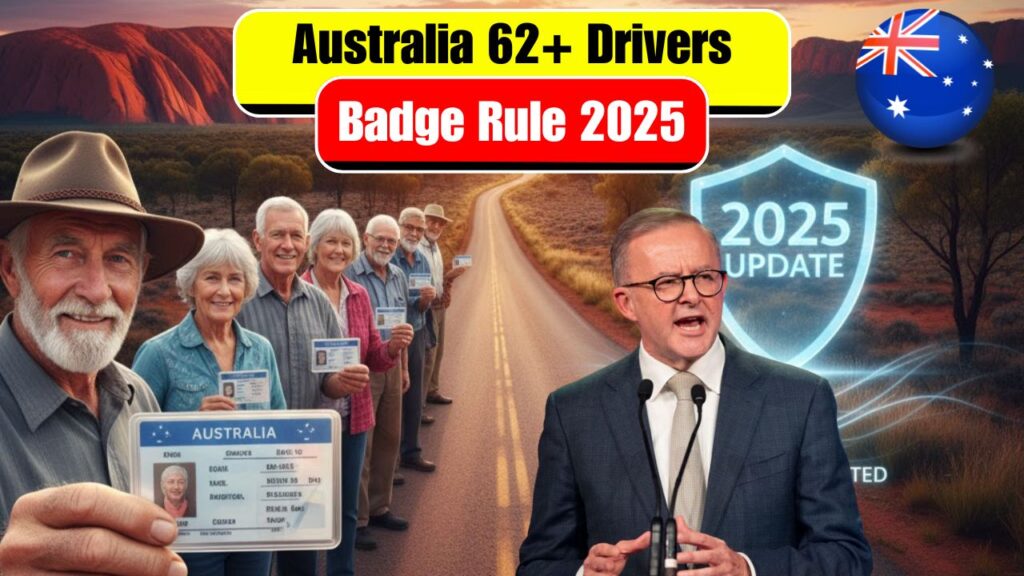In a new move aimed at enhancing road safety, the Australian government has announced that from 2025 onwards, drivers aged 62 and above must display an official age badge while driving. This rule has been introduced after consultations with transport authorities across the country. The purpose is to identify senior motorists and ensure safer driving practices. The recent update exceptions list released by Australian transport departments provides clarity on who is exempt from this rule. This policy reflects Australia’s ongoing effort to improve road safety measures and protect both elderly drivers and other road users.

New Australian Driving Badge Rule for Seniors
The new badge display regulation for senior drivers in Australia comes as part of a broader national road safety initiative. Drivers aged 62 and older will need to show a visible age indicator while operating a vehicle. According to the Department of Transport, the goal is not to discriminate but to encourage safer roads and quicker medical assistance if needed. The authorities emphasize that senior driver safety has become a growing concern due to increased longevity and driving frequency among older adults. This initiative aims to promote awareness and reduce road incidents involving elderly motorists.
Exceptions to the 62-Plus Driver Badge Policy
The updated exceptions list released by Australian transport agencies includes specific exemptions for seniors with limited driving frequency or those who hold medical fitness certificates. Some rural and regional areas will also be given flexibility in implementing the rule due to accessibility issues. According to local transport departments, individuals who use vehicles only for essential short trips may qualify for exemptions. These tailored guidelines ensure that senior independence is not compromised while maintaining safety priorities on Australian roads. The government has stressed that compassion and practicality will guide enforcement.
Implementation Timeline and Driver Awareness Programs
Beginning in January 2025, Australian states will start the phased rollout of the badge display scheme. The government will distribute awareness pamphlets and conduct workshops to educate seniors about compliance requirements. The public awareness campaign will highlight how the rule benefits both older drivers and the community. Additionally, local councils will host safe driving sessions for seniors to refresh their road knowledge and boost confidence. This national effort is supported by community transport partners who aim to make the transition smooth and respectful for every senior driver.
Summary and Policy Analysis
The 2025 badge display policy for 62-plus drivers in Australia demonstrates a balance between safety and dignity. While it introduces a new requirement, the government’s approach remains supportive rather than punitive. The exemptions list shows flexibility and consideration for varied driving needs across the nation. Experts believe that such inclusive safety policies can lower accident risks while maintaining elderly mobility rights. As Australia adapts to an aging population, this initiative is expected to serve as a model for senior-friendly road reforms in the future.
| Category | Details |
|---|---|
| Effective Year | January 2025 |
| Applicable Age | 62 years and above |
| Badge Requirement | Mandatory for eligible drivers |
| Exemption Basis | Medical fitness or rural status |
| Issuing Authority | Australian Transport Department |
Frequently Asked Questions (FAQs)
1. When will the badge rule start?
The rule will take effect from January 2025.
2. Who needs to display the badge?
All Australian drivers aged 62 and above must display it.
3. Are there any exemptions?
Yes, seniors with medical certificates or in rural areas may be exempt.
4. What is the aim of this policy?
The policy aims to enhance road safety for elderly drivers and others.








